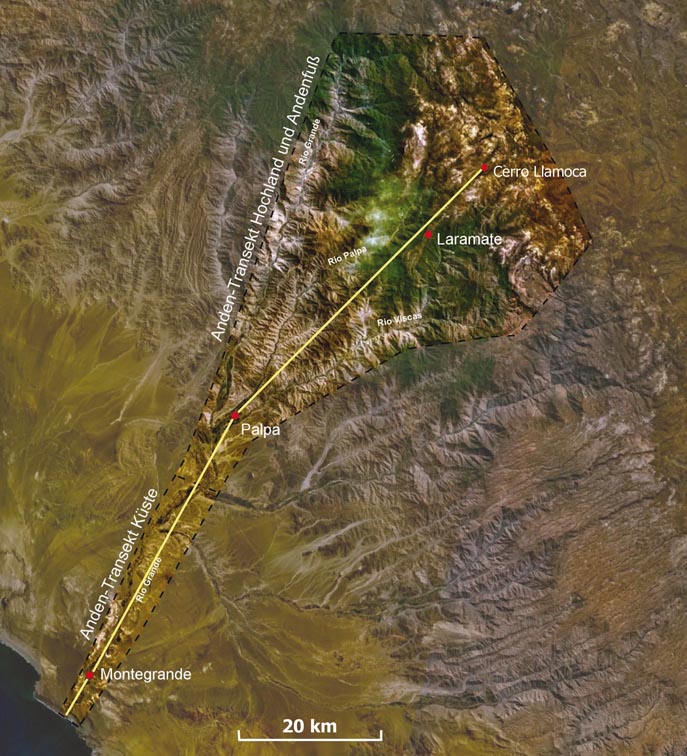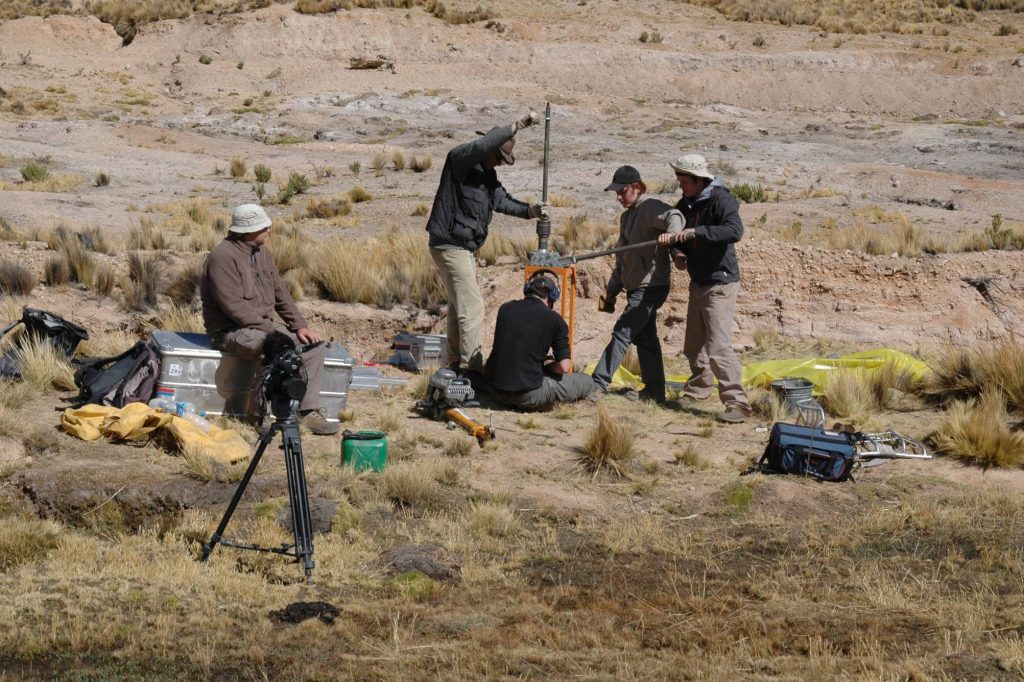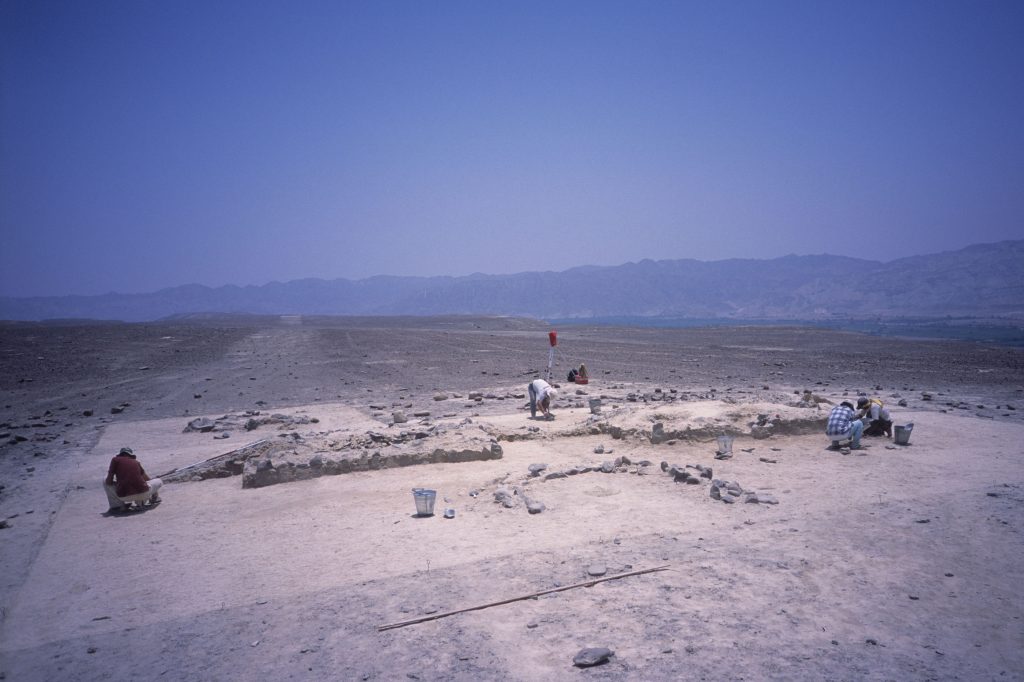The “Andes Transect” is a region under scientific investigation on the west side of the Andes in southern Peru. There a team from the DAI’s Commission for Archaeology of Non-European Cultures is documenting 1,500 pre-Hispanic settlements in association with partners. The interdisciplinary collaborative project brings together researchers from the fields of archaeology, geography, environmental physics, historical anthropology and human ecology.

Together they are investigating what influence changes in the environment and long-term climate variations have on the development of societies. To this end, the region’s soil archives are being opened up: drilling cores extending to a depth of ten metres are being extracted. They contain plant and pollen remains which indicate how the landscape in the Andes Transect has changed over the past 8,000 years. Analysis of the sediments reveals that the coastal region had a wetter climate and richer vegetation in the past than it does today. This was accompanied by dense population with intensive irrigation farming. In more arid phases, like the period between 600 and 1000 AD, the population density in the region sharply declined. This dependency on an adequate water supply is reflected in the rituals, as is attested by the famous Nazca Lines, which were used for processions connected with water and fertility cults.

Geomorphologists from Heidelberg University carry out pile core sampling on the upland moor of Llamocca to extract drilling cores for scientific analysis (Photo: Andrew Hein) 
Stone platforms are excavated in the desert near Palpa. The platforms were used by the Nazca population in ritual supplication for water (Photo: M. Reindel, DAI KAAK)